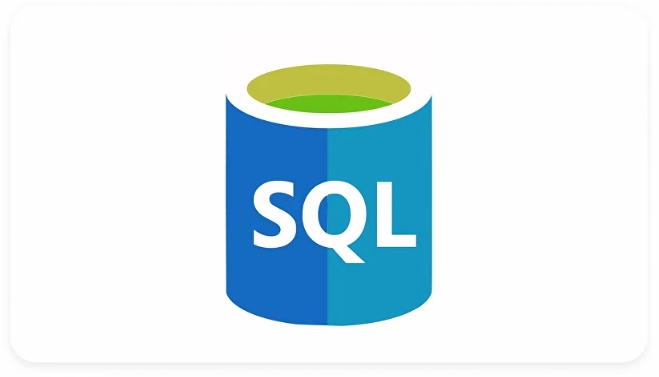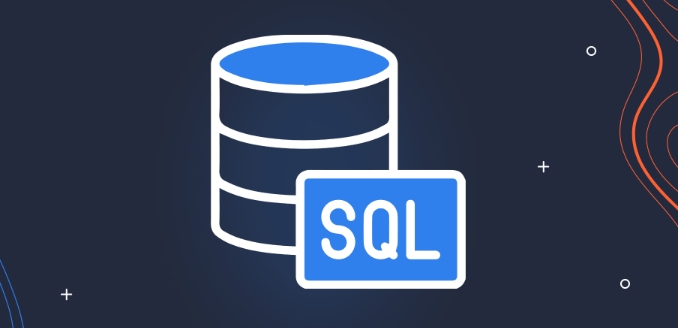To effectively audit the security of SQL databases, the core is to systematically check permissions, configuration and access behavior through the framework. Common SQL database security audit frameworks include Microsoft SQL Server Audit, Oracle Database Vault Audit Vault, MySQL Enterprise Audit, and open source tools such as Lynis and SQLmap. Key points of audit include user permission management, login attempt recording, sensitive data access tracking, and change history. In actual deployment, we need to pay attention to problems such as excessive logs, performance impact, log storage policies and lack of centralized management platforms. It is recommended to enable event capture on demand, perform performance testing, encrypt archive logs and use a unified platform to manage centrally. The quick steps to get started are: determine the audit objectives, select the appropriate framework, configure rules, set log paths, and establish an audit mechanism to ensure that the database is safe and controllable.

If you want to know how to effectively audit the security of SQL databases, the core is to systematically check permissions, configuration and access behavior through the framework. There are several mainstream SQL database security audit frameworks on the market that can help you find potential vulnerabilities and prevent data leakage or illegal operations.

1. Common SQL database security audit framework
Currently, the most commonly used include:
- Microsoft SQL Server Audit : Designed specifically for SQL Server, it supports fine-grained audit rule settings.
- Oracle Database Vault Audit Vault : Applicable to Oracle environment, providing access control and centralized auditing capabilities.
- MySQL Enterprise Audit : A plug-in audit solution provided by commercial version of MySQL.
- Open Source tools such as Lynis, sqlmap (for detection) : suitable for teams with limited budgets, but need to build logic and processes yourself.
These frameworks have their own advantages and disadvantages, and when choosing, you should combine the type of database you use and the size of the enterprise.

2. Key points of audit: Several aspects that you cannot ignore
Before using any framework, make it clear what you want to audit:
- User Rights Management : Does anyone have permissions that are beyond their responsibilities? For example, do ordinary employees have DROP TABLE permissions?
- Login attempt record : Are there frequent failed login? This may be a precursor to the attack.
- Sensitive data access tracking : At what time did anyone access fields such as ID number, bank card number, etc.?
- Change history : Are structural modifications (such as ALTER TABLE) and stored procedure updates recorded?
If this information is not collected correctly, even if there is an audit framework, it will be useless.

3. Frequently Asked Questions and Suggestions in Actual Deployment
Many people are prone to getting stuck when deploying audit frameworks. Here are some experience summary:
Too many logs, difficult to analyze
A large number of logs will be generated after the audit is turned on. It is recommended to enable event capture as needed to avoid "finding a needle in a haystack". Only high-risk operations can be monitored.Performance impact is underestimated
Some audit mechanisms will slow down database response speed, especially full table scanning operations. It is best to do performance testing before going online, especially in production environments.Log storage and retention policies confusing
Logs should be archived regularly and stored encryptedly. Also make sure that only authorized personnel can access these log files, otherwise the audit itself is risky.No centralized management platform
If you maintain multiple database instances, it is recommended to use a unified audit platform (such as Splunk, ELK) to centrally view logs to improve efficiency.
4. Start your audit work in a few simple steps
If you want to get started quickly, you can follow the steps below:
- Determine the target you want to audit (such as user access, DDL statement execution)
- Select the appropriate audit framework based on the database type
- Configure audit rules and enable
- Set log output path and format
- Establish a regular review mechanism to deal with abnormalities in a timely manner
These steps do not seem complicated, but each step takes into account the impact of the actual operating environment.
Basically all that is. The key is to choose the right tools and set the rules according to your own situation, so as not to let the database become a "naked" state.
The above is the detailed content of SQL Database Security Auditing Frameworks. For more information, please follow other related articles on the PHP Chinese website!

Hot AI Tools

Undress AI Tool
Undress images for free

Undresser.AI Undress
AI-powered app for creating realistic nude photos

AI Clothes Remover
Online AI tool for removing clothes from photos.

Clothoff.io
AI clothes remover

Video Face Swap
Swap faces in any video effortlessly with our completely free AI face swap tool!

Hot Article

Hot Tools

Notepad++7.3.1
Easy-to-use and free code editor

SublimeText3 Chinese version
Chinese version, very easy to use

Zend Studio 13.0.1
Powerful PHP integrated development environment

Dreamweaver CS6
Visual web development tools

SublimeText3 Mac version
God-level code editing software (SublimeText3)

Hot Topics
 How to use IF/ELSE logic in a SQL SELECT statement?
Jul 02, 2025 am 01:25 AM
How to use IF/ELSE logic in a SQL SELECT statement?
Jul 02, 2025 am 01:25 AM
IF/ELSE logic is mainly implemented in SQL's SELECT statements. 1. The CASEWHEN structure can return different values ??according to the conditions, such as marking Low/Medium/High according to the salary interval; 2. MySQL provides the IF() function for simple choice of two to judge, such as whether the mark meets the bonus qualification; 3. CASE can combine Boolean expressions to process multiple condition combinations, such as judging the "high-salary and young" employee category; overall, CASE is more flexible and suitable for complex logic, while IF is suitable for simplified writing.
 How to create a temporary table in SQL?
Jul 02, 2025 am 01:21 AM
How to create a temporary table in SQL?
Jul 02, 2025 am 01:21 AM
Create temporary tables in SQL for storing intermediate result sets. The basic method is to use the CREATETEMPORARYTABLE statement. There are differences in details in different database systems; 1. Basic syntax: Most databases use CREATETEMPORARYTABLEtemp_table (field definition), while SQLServer uses # to represent temporary tables; 2. Generate temporary tables from existing data: structures and data can be copied directly through CREATETEMPORARYTABLEAS or SELECTINTO; 3. Notes include the scope of action is limited to the current session, rename processing mechanism, performance overhead and behavior differences in transactions. At the same time, indexes can be added to temporary tables to optimize
 How to get the current date and time in SQL?
Jul 02, 2025 am 01:16 AM
How to get the current date and time in SQL?
Jul 02, 2025 am 01:16 AM
The method of obtaining the current date and time in SQL varies from database system. The common methods are as follows: 1. MySQL and MariaDB use NOW() or CURRENT_TIMESTAMP, which can be used to query, insert and set default values; 2. PostgreSQL uses NOW(), which can also use CURRENT_TIMESTAMP or type conversion to remove time zones; 3. SQLServer uses GETDATE() or SYSDATETIME(), which supports insert and default value settings; 4. Oracle uses SYSDATE or SYSTIMESTAMP, and pay attention to date format conversion. Mastering these functions allows you to flexibly process time correlations in different databases
 What is the difference between WHERE and HAVING clauses in SQL?
Jul 03, 2025 am 01:58 AM
What is the difference between WHERE and HAVING clauses in SQL?
Jul 03, 2025 am 01:58 AM
The main difference between WHERE and HAVING is the filtering timing: 1. WHERE filters rows before grouping, acting on the original data, and cannot use the aggregate function; 2. HAVING filters the results after grouping, and acting on the aggregated data, and can use the aggregate function. For example, when using WHERE to screen high-paying employees in the query, then group statistics, and then use HAVING to screen departments with an average salary of more than 60,000, the order of the two cannot be changed. WHERE always executes first to ensure that only rows that meet the conditions participate in the grouping, and HAVING further filters the final output based on the grouping results.
 What is the purpose of the DISTINCT keyword in a SQL query?
Jul 02, 2025 am 01:25 AM
What is the purpose of the DISTINCT keyword in a SQL query?
Jul 02, 2025 am 01:25 AM
The DISTINCT keyword is used in SQL to remove duplicate rows in query results. Its core function is to ensure that each row of data returned is unique and is suitable for obtaining a list of unique values ??for a single column or multiple columns, such as department, status or name. When using it, please note that DISTINCT acts on the entire row rather than a single column, and when used in combination with multiple columns, it returns a unique combination of all columns. The basic syntax is SELECTDISTINCTcolumn_nameFROMtable_name, which can be applied to single column or multiple column queries. Pay attention to its performance impact when using it, especially on large data sets that require sorting or hashing operations. Common misunderstandings include the mistaken belief that DISTINCT is only used for single columns and abused in scenarios where there is no need to deduplicate D
 Defining Database Schemas with SQL CREATE TABLE Statements
Jul 05, 2025 am 01:55 AM
Defining Database Schemas with SQL CREATE TABLE Statements
Jul 05, 2025 am 01:55 AM
In database design, use the CREATETABLE statement to define table structures and constraints to ensure data integrity. 1. Each table needs to specify the field, data type and primary key, such as user_idINTPRIMARYKEY; 2. Add NOTNULL, UNIQUE, DEFAULT and other constraints to improve data consistency, such as emailVARCHAR(255)NOTNULLUNIQUE; 3. Use FOREIGNKEY to establish the relationship between tables, such as orders table references the primary key of the users table through user_id.
 What is a sequence object in SQL and how is it used?
Jul 02, 2025 am 01:21 AM
What is a sequence object in SQL and how is it used?
Jul 02, 2025 am 01:21 AM
AsequenceobjectinSQLgeneratesasequenceofnumericvaluesbasedonspecifiedrules,commonlyusedforuniquenumbergenerationacrosssessionsandtables.1.Itallowsdefiningintegersthatincrementordecrementbyasetamount.2.Unlikeidentitycolumns,sequencesarestandaloneandus
 Key Differences Between SQL Functions and Stored Procedures.
Jul 05, 2025 am 01:38 AM
Key Differences Between SQL Functions and Stored Procedures.
Jul 05, 2025 am 01:38 AM
SQLfunctionsandstoredproceduresdifferinpurpose,returnbehavior,callingcontext,andsecurity.1.Functionsreturnasinglevalueortableandareusedforcomputationswithinqueries,whileproceduresperformcomplexoperationsanddatamodifications.2.Functionsmustreturnavalu






